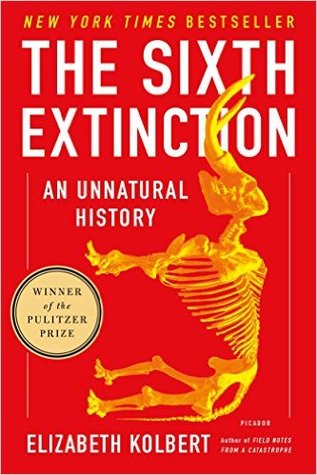More on this book
Community
Kindle Notes & Highlights
Read between
May 27 - August 4, 2024
Today, amphibians enjoy the dubious distinction of being the world’s most endangered class of animals; it’s been calculated that the group’s extinction rate could be as much as forty-five thousand times higher than the background rate. But extinction rates among many other groups are approaching amphibian levels. It is estimated that one-third of all reef-building corals, a third of all freshwater mollusks, a third of sharks and rays, a quarter of all mammals, a fifth of all reptiles, and a sixth of all birds are headed toward oblivion.
This sort of intercontinental reshuffling, which nowadays we find totally unremarkable, is probably unprecedented in the three-and-a-half-billion-year history of life.
the knobby protuberances on the animal’s molars apparently reminded him of nipples.
His interest, after all, was not in the origin of species but in their demise.
“Life on earth has often been disturbed by terrible events,”
(As one chronicler observed, “the great auks of Funk Island were exploited in every way that human ingenuity could devise.”)
To walk up the gorge today is thus to travel, layer by layer, through time. In the space of a few hundred yards, you can cover almost a hundred million years.
Life, Cuvier recognized, had a history. This history was marked by loss and punctuated by events too terrible for human imagining.
There is also a six-inch-long sea cucumber, which bears an unfortunate resemblance to a blood sausage or, worse yet, a turd.
Ocean acidification is sometimes referred to as global warming’s “equally evil twin.”
By the scale of reefs, the pyramids at Giza are kiddie blocks.
Reefs are thus not just underwater rainforests; they are rainforests in a marine Sahara.
As a general rule, the variety of life is most impoverished at the poles and richest at low latitudes.
Wood storks cool off by defecating on their own legs.
Silman talks about plants the way other people speak about movie stars. One tree he described to me as “charismatic.” Others were “hilarious,” “crazy,” “neat,” “clever,” and “amazing.”
One of the defining features of the Anthropocene is that the world is changing in ways that compel species to move, and another is that it’s changing in ways that create barriers—roads, clear-cuts, cities—that prevent them from doing so.
the science writer Alan Burdick has called Homo sapiens “arguably the most successful invader in biological history”—
In an ironic twist, humans have brought the species so low that it seems only heroic human efforts can save it.
Megaherbivores generate mega amounts of shit, as is clear to anyone who’s ever spent time standing behind a rhino.
Because no matter how big an animal is, we don’t have a constraint on what we can eat.”
when humans appeared, “the rules of the survival game” changed.
Though it might be nice to imagine there once was a time when man lived in harmony with nature, it’s not clear that he ever really did.
Directly inside the museum’s entrance stands a model of an elderly Neanderthal smiling benignantly and leaning on a stick. He resembles an unkempt Yogi Berra.
Before modern humans “replaced” the Neanderthals, they had sex with them.
One of the many unintended consequences of the Anthropocene has been the pruning of our own family tree.
KINOHI’S tragicomic sex life provides more evidence—if any more was needed—of how seriously humans take extinction. Such is the pain the loss of a single species causes that we’re willing to perform ultrasounds on rhinos and handjobs on crows.
“A Frog Dies in Atlanta, and a World Vanishes with It.”
(The mere existence of the Ichneumonidae, Charles Darwin once argued to a friend, was enough to disprove the Biblical theory of creation, as no “beneficent and omnipotent God” would have designed such a ghoulish, murderous creature.)
humans could prove to be more dangerous than an asteroid.


